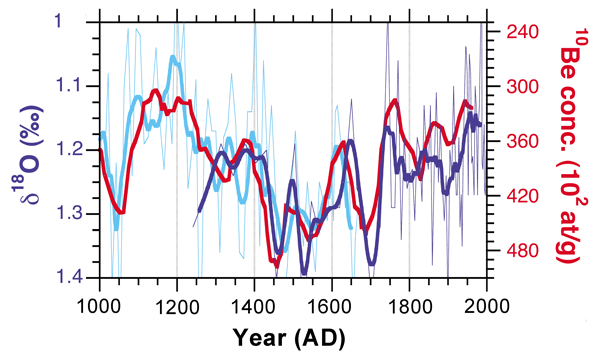Reference
Sejrup, H.P., Lehman, S.J., Haflidason, H., Noone, D., Muscheler, R., Berstad, I.M. and Andrews, J.T. 2010. Response of Norwegian Sea temperature to solar forcing since 1000 A.D. Journal of Geophysical Research 115: 10.1029/2010JC006264.
Description
Working with two sediment cores extracted from the seabed of the eastern Norwegian Sea (~64°N, 3°E), Sejrup et al. developed a 1000-year-long proxy temperature record "based on measurements of δ18O in Neogloboquadrina pachyderma, a planktonic foraminifer that calcifies at relatively shallow depths within the Atlantic waters of the eastern Norwegian Sea during late summer." This work revealed, as they describe it, that "the lowest isotope values (highest temperatures) of the last millennium are seen ~1100-1300 A.D., during the Medieval Climate Anomaly, and again after ~1950 A.D." And by applying "relatively conservative isotopic estimates of temperature change" utilized by the authors of -0.25‰/°C, from the graphs of their data, it can be estimated that the most extreme minimum δ18O values of the 1100-1300 period yield temperatures that were at least 0.35°C warmer than those of the post-1950 period.





